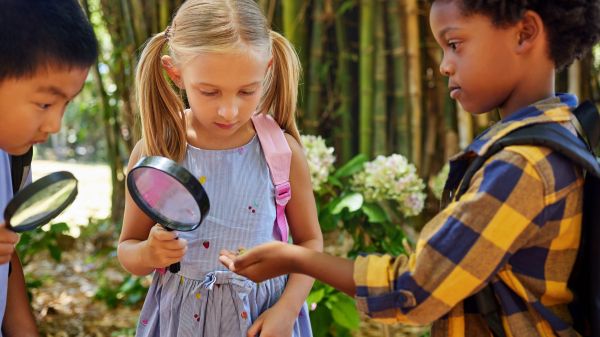Beyond Good Intentions: What Recent Research Tells Environmental Educators About Creating Effective Programs

Environmental education has reached a critical juncture. While recent research confirms that our programs consistently produce positive outcomes, with success rates exceeding 90% across academic, social, and environmental domains, it also reveals uncomfortable truths about who benefits and how we can do better. For environmental educators committed to meaningful impact, these findings offer both validation and a roadmap for transformation.
View eeRESEARCH Collection: K–12
The Promise and the Problem
The good news is undeniable: environmental education works. A comprehensive review of 119 studies spanning two decades found that environmental programs reliably improve not just environmental knowledge and attitudes, but also critical thinking, academic achievement, and social skills. This research validates what many educators have long suspected, environmental education's strength lies in its versatility and ability to address multiple learning goals simultaneously.
However, this success story comes with a significant caveat. A 20-year study of Maryland's Green Schools Program revealed a troubling pattern: environmental education initiatives primarily benefit economically advantaged students. While schools serving affluent populations saw sustained improvements in science achievement over time, high-poverty schools experienced little to no benefit, and in some cases, declining performance the longer they maintained green school status.
This disparity isn't just disappointing; it's a call to action. Environmental education risks perpetuating the very inequities we often seek to address through our programs focused on community empowerment.
Moving Beyond Surface-Level Integration
Part of the challenge lies in how we conceptualize and implement environmental education. Research on art education reveals that while 75% of teachers incorporate environmental themes, their integration remains superficial. Many educators view environmental content as competing with core subject matter rather than enhancing it, leading to add-on approaches that fail to realize environmental education's full potential.
This pattern extends beyond art classrooms. In citizen science programs, often celebrated as exemplars of authentic environmental education, most K-12 initiatives engage students primarily as data collectors rather than environmental problem-solvers. Students count birds or monitor water quality but rarely progress to analyzing findings, communicating results, or taking collective action on environmental issues. While these contributory activities have value, they miss opportunities to develop the civic engagement and collaborative problem-solving skills essential for environmental citizenship.
The Equity Imperative
The research points to several factors that may explain why environmental education benefits aren't reaching all students equally. Schools serving high-need populations often face additional barriers including limited outdoor access, resource constraints, and administrative restrictions that prevent effective implementation. Urban schools may struggle to connect environmental programming to natural settings, while budget limitations can restrict hands-on materials and field experiences.
For environmental educators, this means that simply expanding program reach isn't enough. We must deliberately design for equity, providing more intensive support and different approaches for schools serving disadvantaged communities. This might include developing innovative solutions for urban contexts, addressing resource disparities, and creating professional development specifically focused on environmental education in high-need settings.
Strategies for Deeper Impact
Recent research offers several concrete strategies for creating more effective and equitable programs:
Emphasize Collective Action Over Individual Knowledge: The most impactful environmental education programs engage students in collaborative problem-solving and civic participation. Rather than focusing solely on knowledge transmission, design experiences where students work together to address real environmental challenges in their communities.
Integrate Rather Than Add On: Whether in art, science, or other subjects, environmental themes should enhance rather than compete with core learning goals. Help teachers understand how environmental contexts can strengthen academic skill development rather than distract from it.
Design for the Long Term: Most environmental education research focuses on immediate outcomes, but environmental literacy develops over time. Create programs with sustained engagement and build in long-term follow-up to support lasting impact.
Measure What Matters: While it's easier to assess knowledge and attitudes, environmental education's ultimate goals involve behavior change and civic engagement. The new EE21 measurement tool provides a validated way to assess these deeper outcomes across diverse program types.
The Path Forward
Perhaps most encouragingly, research on schools partnering with nature demonstrates that meaningful environmental integration is possible across contexts. From LEED-certified buildings to transformed schoolyards, schools successfully create sustainable learning environments that benefit students, communities, and local ecosystems. These examples show that environmental education can simultaneously address sustainability, academic achievement, and community well-being when designed thoughtfully.
The key insight across all this research is that environmental education's effectiveness depends not just on good intentions but on intentional design that addresses equity, emphasizes collaboration over contribution, and measures success by behavioral and civic outcomes rather than just knowledge acquisition.
As environmental educators, we have strong evidence that our work makes a difference. Now we must ensure that difference reaches all students and prepares them not just to understand environmental challenges, but to act collectively in addressing them. The future of environmental education, and perhaps the environment itself, depends on our willingness to move beyond good intentions toward truly transformative practice.
